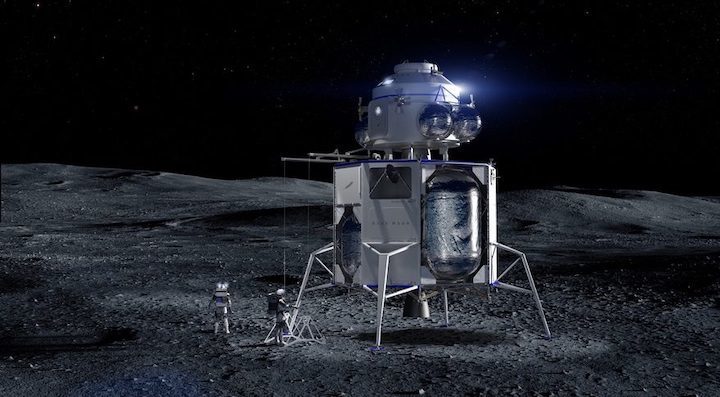29.09.2019

BROWNSVILLE, Texas — NASA announced Sept. 27 the award of more than $40 million in contracts to 14 companies, including Blue Origin and SpaceX, to develop technologies that can support NASA’s long-term exploration plans.
The awards, with a total value of $43.2 million, are the fourth in a series of “Tipping Point” contracts from NASA’s Space Technology Mission Directorate that support work for up to three years on technologies ranging from propellant production to avionics. Winning companies will also contribute their own funds to the projects, with a minimum percentage based on the size of the company.
“These promising technologies are at a ‘tipping point’ in their development, meaning NASA’s investment is likely the extra push a company needs to significantly mature a capability,” Jim Reuter, NASA associate administrator for space technology, said in an agency statement announcing the contracts. “These are important technologies necessary for sustained exploration of the moon and Mars.”
The largest award went to Blue Origin, which received $10 million to carry out a ground demonstration of technology to liquefy and store hydrogen and oxygen. Such technology, NASA said, could eventually be used on a propellant production plant on the moon, converting water ice found there into liquid hydrogen and liquid oxygen for use by lunar landers, like Blue Origin’s proposed Blue Moon lander.
SpaceX received a $3 million contract to work with NASA’s Marshall Space Flight Center on “coupler prototypes” for in-space refueling. SpaceX has previously discussed using in-space refueling of its Starship vehicle, with tankers launched from Earth, to enable missions to the moon and Mars.
Three companies received contracts to demonstrate satellite propulsion technologies for cubesats. Accion Systems, which is developing ion electrospray thrusters, won $3.9 million to develop thrusters with the same performance as cold-gas thrusters used on NASA’s MarCO cubesats that flew past Mars last year, but with less mass and power. CU Aerospace will use a $1.7 million award to fly a cubesat with two different propulsion systems. ExoTerra Resource received $2 million for demonstrating a high-impulse solar-electric propulsion system on a cubesat.
Two companies that are part of NASA’s Commercial Lunar Payload Services program also received awards. Astrobotic won $2 million to work with the Jet Propulsion Laboratory and Kennedy Space Center to continue work on small rovers. Intuitive Machines received $1.3 million for a spacecraft vision processing computer and software system.
The Tipping Point contracts are the second set of agreements NASA has made with industry on exploration technologies in the last two months. In July, NASA announced Space Act Agreements with 13 companies to support development of technologies on a no-cost basis. The recipients included Blue Origin, which signed three separate agreements on navigation and guidance systems, fuel cells and high-temperature materials for engine nozzles. SpaceX received two agreements, one on studying the plume interaction with regolith when landing large rockets on the moon and other for work on in-space propellant transfer.
Quelle: SN
